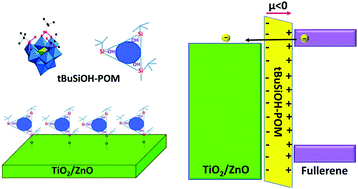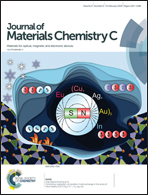A silanol-functionalized polyoxometalate with excellent electron transfer mediating behavior to ZnO and TiO2 cathode interlayers for highly efficient and extremely stable polymer solar cells†
Abstract
Combining high efficiency and long lifetime under ambient conditions still poses a major challenge towards commercialization of polymer solar cells. Here we report a facile strategy that can simultaneously enhance the efficiency and temporal stability of inverted photovoltaic architectures. Inclusion of a silanol-functionalized organic–inorganic hybrid polyoxometalate derived from a PW9O34 lacunary phosphotungstate anion, namely (nBu4N)3[PW9O34(tBuSiOH)3], significantly increases the effectiveness of the electron collecting interface, which consists of a metal oxide such as titanium dioxide or zinc oxide, and leads to a high efficiency of 6.51% for single-junction structures based on poly(3-hexylthiophene):indene-C60 bisadduct (P3HT:IC60BA) blends. The above favourable outcome stems from a large decrease in the work function, an effective surface passivation and a decrease in the surface energy of metal oxides which synergistically result in the outstanding electron transfer mediating capability of the functionalized polyoxometalate. In addition, the insertion of a silanol-functionalized polyoxometalate layer significantly enhances the ambient stability of unencapsulated devices which retain nearly 90% of their original efficiencies (T90) after 1000 hours.



 Please wait while we load your content...
Please wait while we load your content...